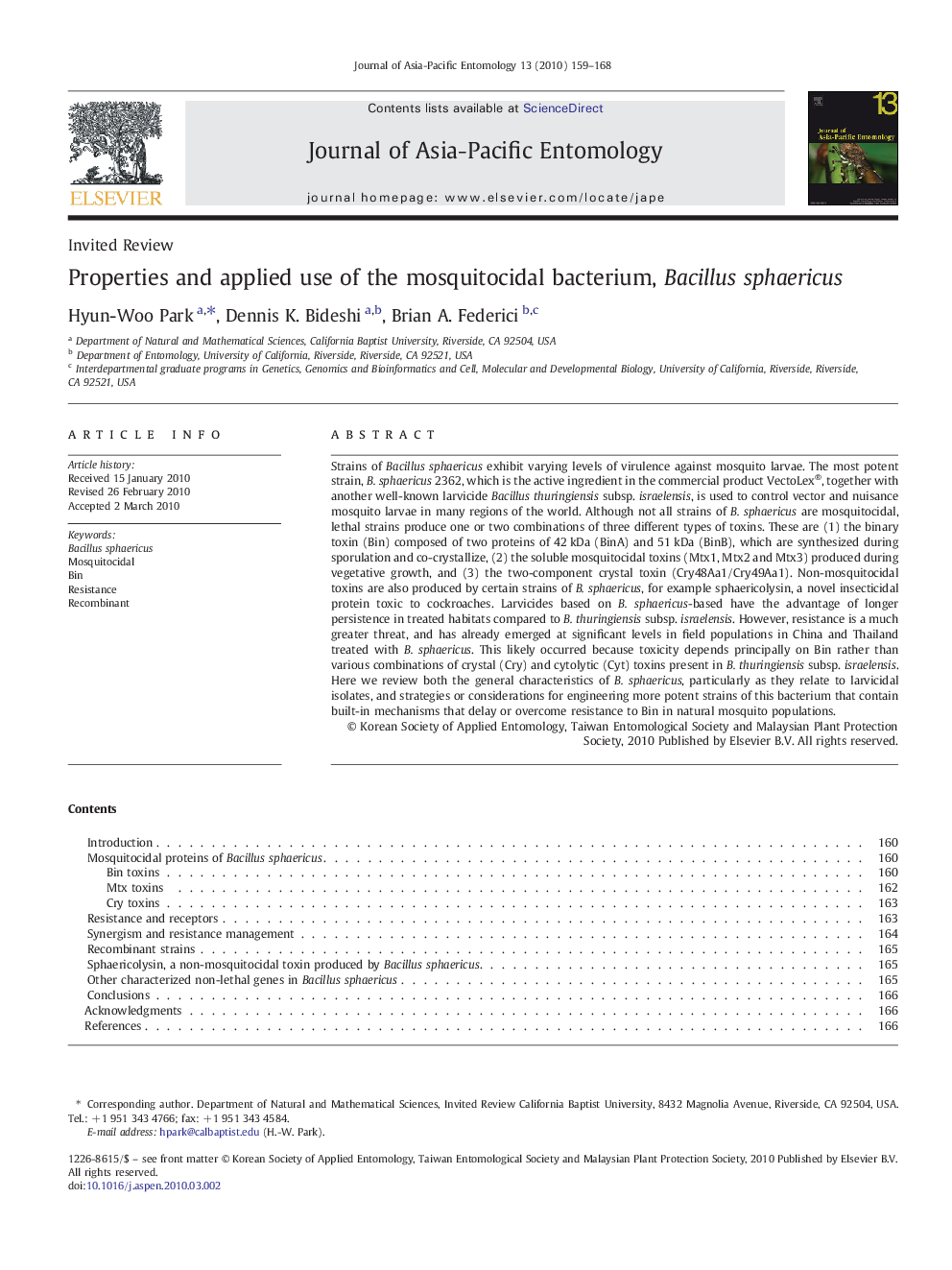| Article ID | Journal | Published Year | Pages | File Type |
|---|---|---|---|---|
| 4524926 | Journal of Asia-Pacific Entomology | 2010 | 10 Pages |
Strains of Bacillus sphaericus exhibit varying levels of virulence against mosquito larvae. The most potent strain, B. sphaericus 2362, which is the active ingredient in the commercial product VectoLex®, together with another well-known larvicide Bacillus thuringiensis subsp. israelensis, is used to control vector and nuisance mosquito larvae in many regions of the world. Although not all strains of B. sphaericus are mosquitocidal, lethal strains produce one or two combinations of three different types of toxins. These are (1) the binary toxin (Bin) composed of two proteins of 42 kDa (BinA) and 51 kDa (BinB), which are synthesized during sporulation and co-crystallize, (2) the soluble mosquitocidal toxins (Mtx1, Mtx2 and Mtx3) produced during vegetative growth, and (3) the two-component crystal toxin (Cry48Aa1/Cry49Aa1). Non-mosquitocidal toxins are also produced by certain strains of B. sphaericus, for example sphaericolysin, a novel insecticidal protein toxic to cockroaches. Larvicides based on B. sphaericus-based have the advantage of longer persistence in treated habitats compared to B. thuringiensis subsp. israelensis. However, resistance is a much greater threat, and has already emerged at significant levels in field populations in China and Thailand treated with B. sphaericus. This likely occurred because toxicity depends principally on Bin rather than various combinations of crystal (Cry) and cytolytic (Cyt) toxins present in B. thuringiensis subsp. israelensis. Here we review both the general characteristics of B. sphaericus, particularly as they relate to larvicidal isolates, and strategies or considerations for engineering more potent strains of this bacterium that contain built-in mechanisms that delay or overcome resistance to Bin in natural mosquito populations.
